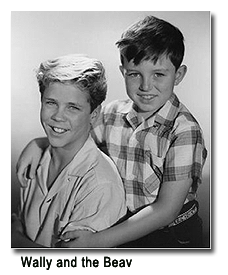America’s Best Urban Neighborhood

Find out what's REALLY happening in the news: The primary purpose of KC NewsWatch will be to watch the news and objectively correct it as needed through appropriate reporting and commentary. Particular emphasis will be on news print, radio and television media reaching areas surrounding the Kansas City Metro area. |
![]()
by Jack Cashill
Published in ingramsonline.com - November 2008
On Tuesday, November 4, I left my house at 5:50 AM to walk to the church where I have voted for the last twenty years.
A neighbor happened to leave his house at the same time, and so we walked over together. One sign of a good neighborhood is that you can and do walk places, even in the dark.
Given that we were going to vote for the same guy, the walk was pleasantly conspiratorial. But it would have been tolerable even if we were voting for different guys.
In truth, I get along well enough with all my neighbors, even those with the “Yes We Can” signs stuck in their yards a week after the election. In their larger worlds, they bear more of the burden of our friendship than I. Unless I miss my guess, they have to defend me much more than I them.
That is another sign of a good neighborhood, a shared sense of place and values that trumps larger ideological differences. In fact, my neighbors live their lives so much like I do that I have a hard time believing that they do not vote as I do.
The presence of a university—two in this case, Rockhurst and UMKC—adds to the flavor of a neighborhood, even if it does lead to a flowering of “Yes We Can” signs. Yet for all their eager chatter about change and—after a few pinot noirs—revolution, the university professors of my acquaintance lead remarkably bourgeois lives. They fret more about promotions, real estate prices and “undesirable elements” (code for “students”) in the neighborhood even more than you and I do.
This shared sense of civility came in handy election morning. True to form, the election judges screwed everything up. There were three different queues outside the church, but no indication of who should get in which one.
I spotted some friends whose names begin with “C” near the front of one queue, and so my neighbor, also a “C”, and I joined it at the end.
When the doors opened, however, we discovered that there was no correlation at all between the outside lines and the alphabetical lines inside, and there was next to no help from the election judges to sort things out.
Imagine a rush hour scene where three highway lanes converge to one, and now triple that to understand the potential confusion. Only the inner civic compass of these citizens kept the morning from collapsing into chaos. In fact, the various queues somehow managed to merge in something resembling good humor.
The neighborhood I am talking about, of course, is Brookside. This homey J.C. Nichols confabulation stretches south of the Country Club Plaza roughly from Troost in the East to Ward Parkway on the west before ending somewhere in Waldo.
That somewhere is pretty far south. Since everyone likes the sound of “Brookside,” and no one likes the sound of “Waldo,” people all the way to 74th Terrace will tell you they live in Brookside.
A walking trail runs several miles from the Plaza to Waldo and has helped weave the neighborhood together. On Mondays, regardless of season, I walk the mile or so south along the trail for half price hamburger night at Hoopers in the quaint and functional Brookside shopping area.
In this, the perfect urban neighborhood, Hoopers stands as the perfectly convivial neighborhood tavern. Everyone may not know your name here, but inevitably some one does. There is a comforting seamlessness among the patrons in age, occupation and income level that dispels all worry of your evening ending in a bar fight.
When we have company, we often walk together to our friendly neighborhood French restaurant, Aixois, there to dine al fresco. True, there are sane and civil neighborhoods in the suburbs, but how many of them haveFrench restaurants that people walk to? How many of them have anything that people walk to?
The suburbs fall short on neighborliness not because of the people who live there, but for reasons of architecture and urban planning. Chief among the deficits is the front porch. Built before central air and backyard decks, the porched homes in Brookside push people into the common area of the street. Indeed Brooksider Mark Funkhouser has raised porch sitting to a political art.
On my block, when my kids were little, there were 10 or so other families with little kids running around in full view on the same block. On a typical day, an informal parental oversight committee would muster on someone’s front porch to watch the kids, hang out, and have a beer or two.
Parents get to know the other parents. This bond comes in handy. One day, for instance, a pair of brothers on the block, about 8 or 9 years old at the time, drenched my 3-year-old daughter with a water balloon. She was hysterical. My wife and older daughter cried out for vengeance and appointed me avenger. “Go beat them up, Dad.”
Fortunately, I had gotten to know the old man. As I walked up the street, I ran though a number of scenarios to extract justice without coming to blows.
 “Mark,” I said, “I’ve got an issue here with Wally and the Beav.” The reference not only defused the tension, but it also established our common culture. In a neighborhood where
values are shared and bonds secured, I had only to explain what the “lads” had done. Mark took care of the rest. I knew he would.
“Mark,” I said, “I’ve got an issue here with Wally and the Beav.” The reference not only defused the tension, but it also established our common culture. In a neighborhood where
values are shared and bonds secured, I had only to explain what the “lads” had done. Mark took care of the rest. I knew he would.
Where the streets are wide and the houses far removed from the street, as they are in some pricier neighborhoods, the sense of community diminishes with every foot of setback. Has anyone seen a kid out playing in Mission Hills—ever?
Conversely, when neighborhoods are too intense and too diverse, the sense of community can break down completely. Robert Putnam, the Harvard political scientist best known for his 2000 book on community, “Bowling Alone,” delivered an unwelcome bit of news with his recent study on civic engagement.
What Putnam discovered after extensive research was that the greater the diversity in a community, the less neighbors volunteer, the less they vote, and the less they trust each other. What makes a neighborhood like Brookside work is its very homogeneity. This has less to do with race or religion or ideology or even sexual orientation than it does with shared values.
The values that matter in a neighborhood are the ones most visibly on display, like how you maintain your property, how much noise you make at night, how and where you park your cars, whether you bring a desert to the block party, and especially, how you take care of Wally and the Beav.

